KITCHEN DEALS
Disclosure: Product links, including Amazon links, will take you to our affiliate partner websites. We may earn a commission on purchases.
- STIR, SCRAPE, AND SERVE | Supoon is the world’s best cooking spoon! With its flat silicone tip, deep scooping head, and flexible squeegee sides, you can scrape your pan or bowl clean, leaving nothing behind and even less to clean up
- MEASURES UP | Comes with 15ml tablespoon and 5ml teaspoon measurement lines. Now you can scrape, measure, stir, mix, scoop, and serve using one silicone spoon. With all these incredible features, the Supoon measures up to its name!
Pricing last updated on April 25, 2024 - 13:30 MDT. Pricing and images from Amazon Product Advertising API. Product prices and availability are accurate as of the date/time indicated and are subject to change. Any price and availability information displayed on Amazon at the time of purchase will apply to the purchase of this product.
The Ultimate Cowtown Ginger Beef
Origin: Calgary, Alberta
GIngerbeef, a Calgary Classic
A Calgary ginger beef recipe that was developed in my home kitchen after hours of experimentation. The Ultimate Cowtown Ginger Beef is the first post in an on-going series of posts entitled “Iconic Canadian Recipes” where I search for well-known, and not-so-well-known, local regional dishes, and try to recreate them in my home kitchen.

The Backstory of this Calgary Ginger Beef Recipe
Growing up in the southern Okanagan, there wasn’t much for 12-year-old me to do outside the tourist season. It was too cold for the beaches, and I didn’t have enough money for the ski hills. In fact, my friends and I were often found hanging out at Cherry Lane Mall on Sunday afternoons spending the little money we made collecting pop cans during the week prior. One of my favorite things about those visits to the mall was ordering a combo meal at Sizzling Rice, a Chinese food restaurant in the food court. Yes, I had to add rice and a side of steamed vegetables to make it a combo, but if the nice Chinese owner who greeted me every Sunday would let me have my way, I would have ordered three portions of just ginger beef—a dish composed of crispy deep-fried beef slathered in a hot ginger sweet sauce. There was nothing else like it, and it ended up becoming a comfort dish that I’d routinely order throughout the rest of my childhood and early adulthood.
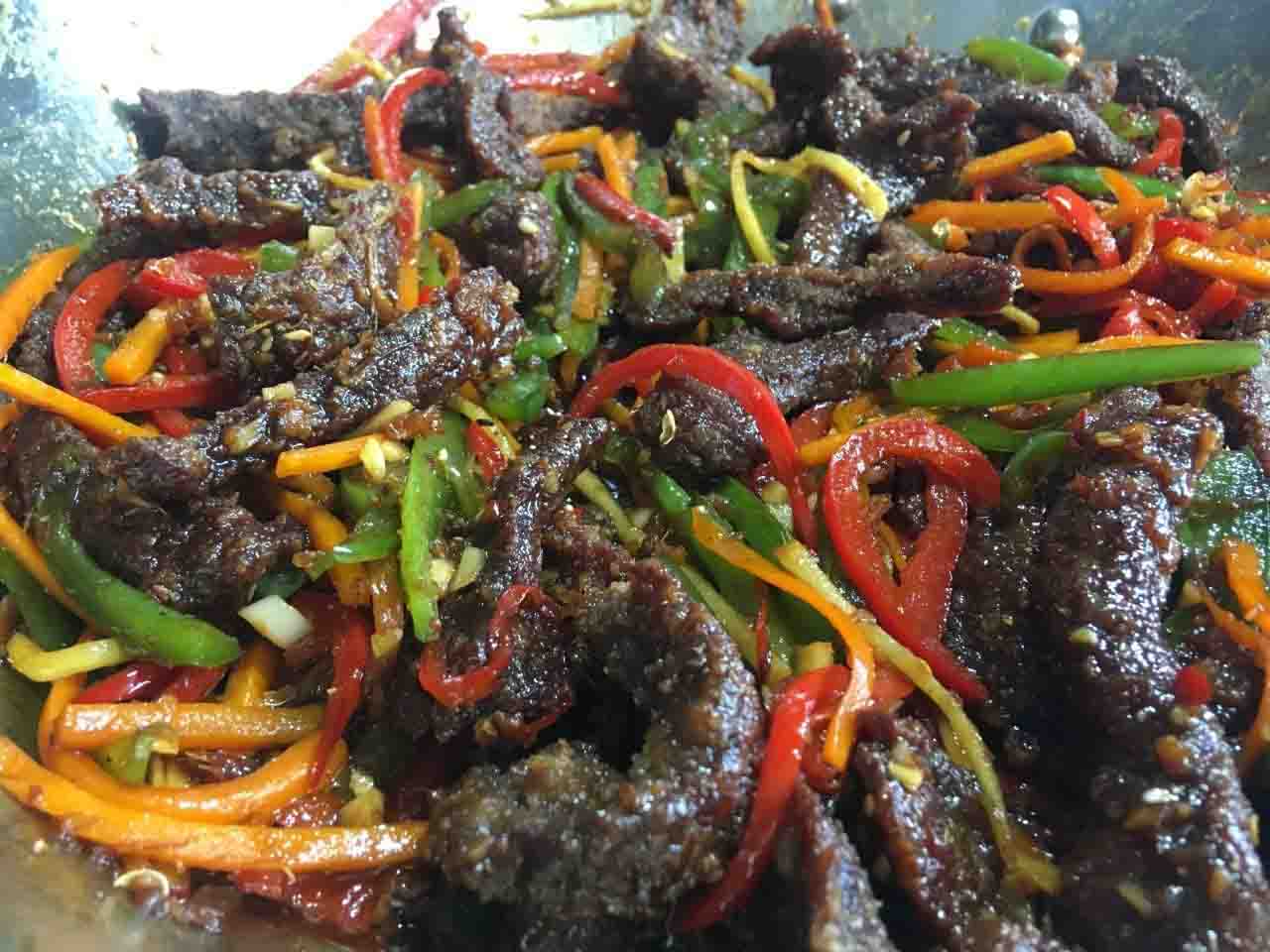
Fast forward 13 years. I had just finished my undergrad at the University of Calgary and moved all the way out to the east coast of Canada for a change of scenery. I settled in Halifax, Nova Scotia and luckily found employment helping to administrate a cancer research study at Dalhousie University. For the first couple months, I was living out of a rented bedroom with limited kitchen space, so eating out was a common occurrence. Chinese food has always been a comfort food for me, so it didn’t take long before I started hitting up all the Chinese food joints on the peninsula. While I enjoyed this exploration of Haligonian-Chinese cuisine, I quickly came a sinking realization; ginger beef, the Chinese takeout dish that of my childhood, did not exist in this part of Canada!
Sure, Jean’s Chinese Food, popular among students for their extra-large portions, was just around the corner from my office. They served something called ‘ginger beef’, but it was not the ginger beef I had known and loved. Black sludge served over soggy beef was a more apt description.
The Great Wall on Bedford Row came closest with their rendition of ginger beef; the sauce was the right consistency and the gingery-spiciness was on point, but it was significantly sweeter than I had been accustomed to and the beef wasn’t very crispy. On its own, it was a great dish, but it just didn’t quite hit the spot when I had a hankering for ginger beef.
Being a western Canadian, I had taken for granted the existence of this sweet gingery dish. Anyone from western Canada knows that ginger beef is synonymous with Chinese food. But the fact is the dish isn’t even from China. Instead, it was developed in Calgary, Alberta during the mid-1970s by chef George Wong at the Silver Inn. The dish was originally named “deep fried shredded beef in chili sauce”, and word quickly spread around Calgary about this tasty dish. Serving ginger and beef in the same dish isn’t anything foreign to Chinese cuisine, but the crispy chewiness of the beef slathered in a hot gingery sweet sauce undoubtedly originated in Calgary.

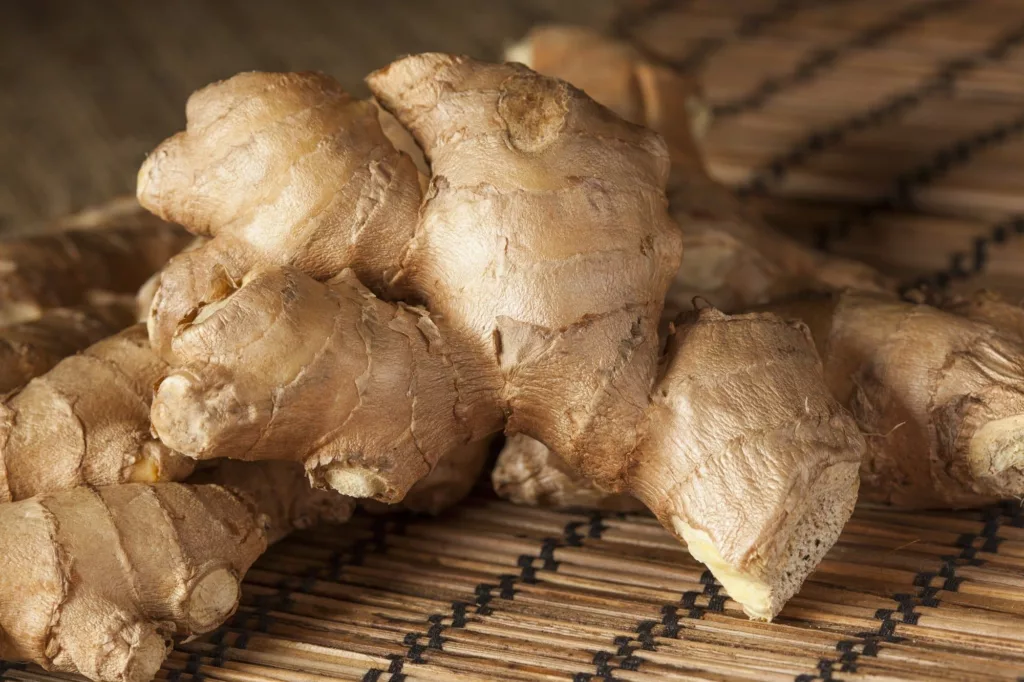
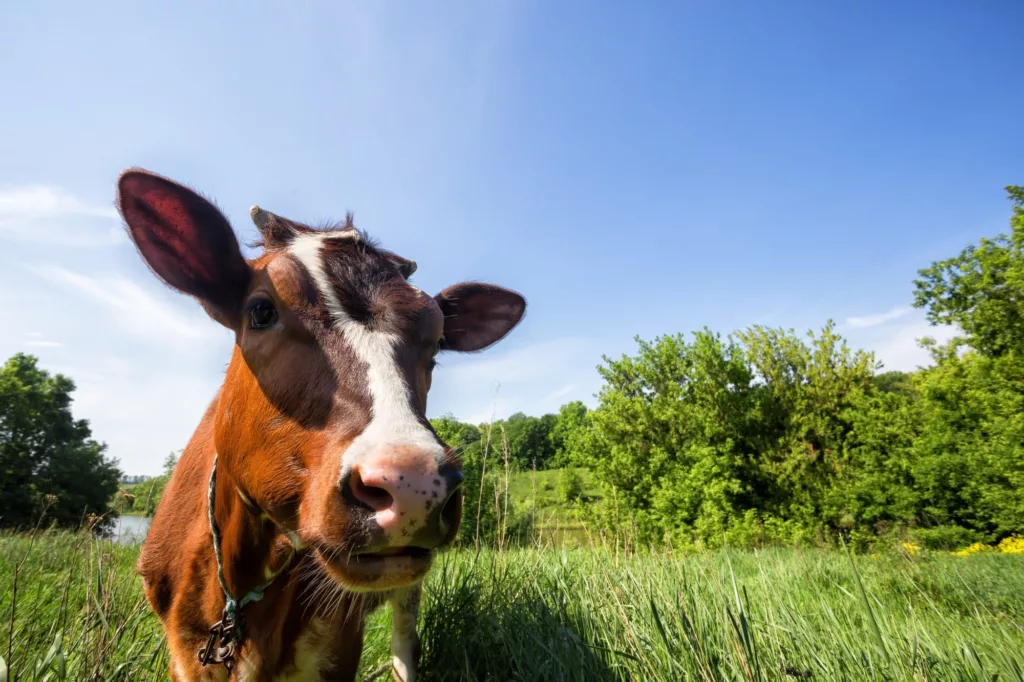
When I finally got my own apartment in Halifax, I attempted to make ginger beef myself, finding only a few recipes on the internet. But every time I made it, the beef wasn’t crispy enough, the sauce was too runny, it wasn’t gingery enough, or it was lacking the subtle sweetness that defines the dish.
A few years later, I moved back to Calgary. One of the first things I did upon returning was order some ginger beef. I must have romanticized the dish, or I just don’t know where to get the good stuff anymore, because I was sorely disappointed in every order. Either the meat was too soggy, or the sauce lacked the punch that was reminiscent of my childhood memories in Chinese food restaurants. I couldn’t believe I was having such trouble finding good ginger beef in Calgary of all places.
Good thing I’m stubborn. After many attempts at recreating this dish, I’ve settled on a recipe. What follows is an explanation of the choices I made in developing this recipe.
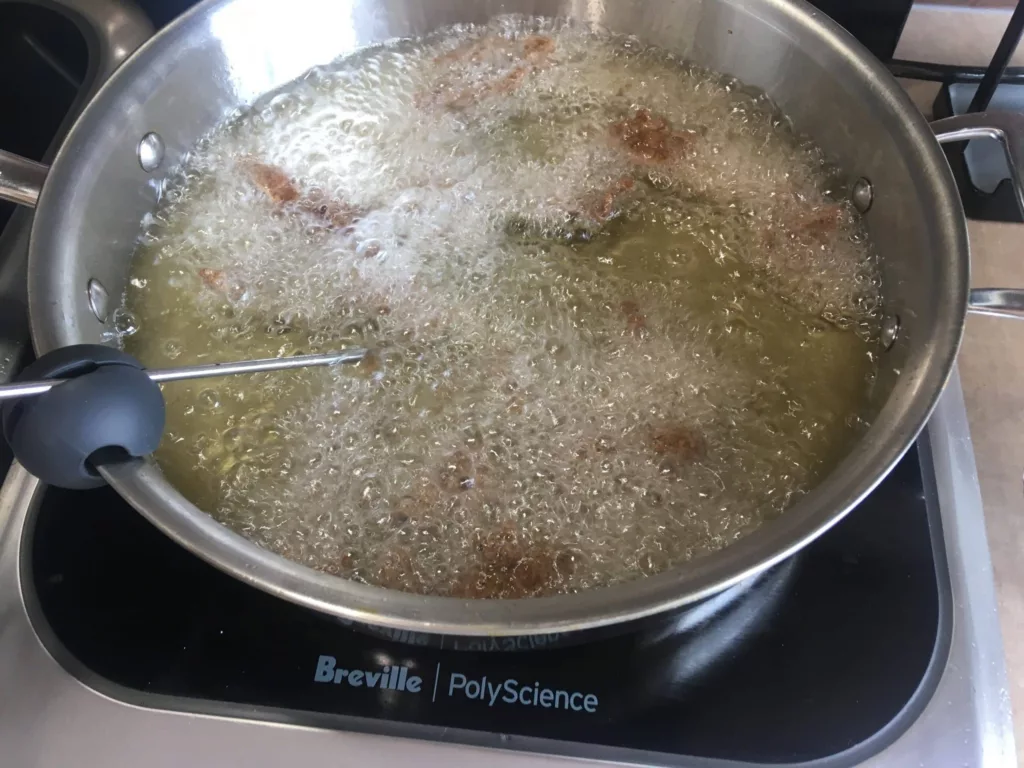
Technique Used in this Calgary Ginger Beef Recipe
Deep Frying the Beef in Less Oil
First of all, I really wanted to avoid heating up a whole pot of oil just for a stir fry. But the dish’s crispiness is ginger beef’s signature. I tried to just straight up pan-fry some marinated beef, and while the dish was still tasty, it was missing a vital textural component. So I settled for 3 cups of oil in a sauté pan or dutch oven, and deep frying the beef in 1/3 batches. These small batches prevented overcrowding of the pan and ensured that the temperature remained high so that the beef was actually fried rather than steamed.
- Enhance your cooking capabilities with this 3 quart stainless steel sauté pan, featuring All-Clad's D3 tri-ply construction for superior heat distribution and retention.
- Fast and Even Heat - D3 tri-ply is fully bonded to the rim for professional performance & durability. The high quality 18/10 stainless steel surface sears to perfection and is ideal to deglaze for pan sauces.
- Design You Will Love - D3 has a professionally polished stainless steel finish. Our classic, double riveted stainless steel handles ensure a secure grip.
- Built to Last - Trusted by generations of chefs and backed by All-Clad's Limited Lifetime Warranty. Our cookware is oven & broiler safe up to 600°F and compatible with any stovetop, including induction. Handwashing is recommended.
- Bonded, Engineered, & Assembled in Canonsburg, PA - USA Since 1971.
Pricing last updated on April 25, 2024 - 11:41 MDT. Pricing and images from Amazon Product Advertising API. Product prices and availability are accurate as of the date/time indicated and are subject to change. Any price and availability information displayed on Amazon at the time of purchase will apply to the purchase of this product.
An Unusual Batter and Marinade
The batter and marinade contains many strange ingredients. I borrowed from Modernist Cuisine’s Korean deepfried wing recipe, my favourite wing recipe ever. The wings are made from a batter of potato starch and “easy blend” flour; a flour you will find in smaller shaker cans–in Canada, it’s “Robin Hood Easy Blend“, whereas in the United States, it’s “Wondra”. A batter made out of this combination of potato starch and easy blend flour crisps and browns wonderfully, and it stays crisp even when it’s sitting in a wet sauce for an extended period of time. The marinade, which is eventually incorporated into the batter, contains vodka. Vodka has a low boiling point and will evaporate quickly during deep frying, resulting in a very flaky and crispy crust.
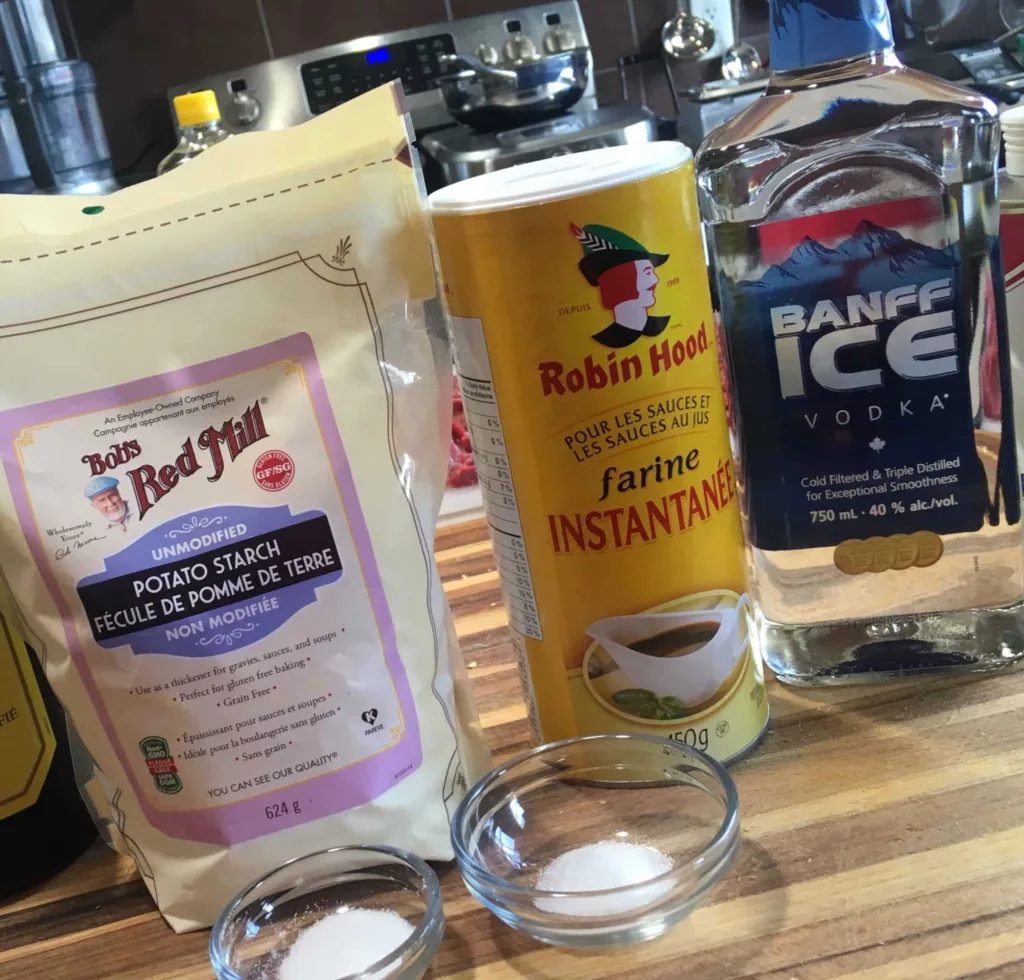
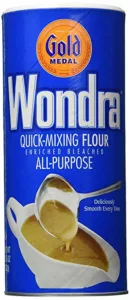
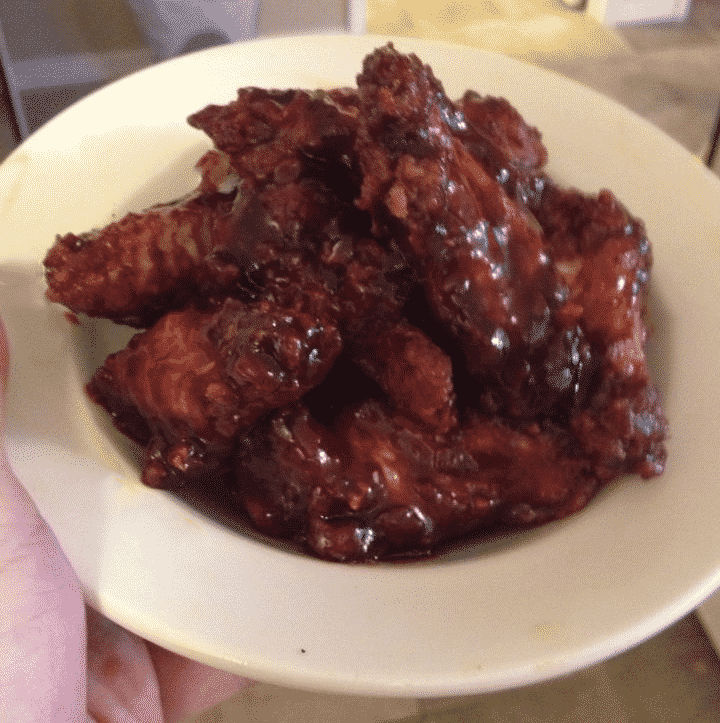
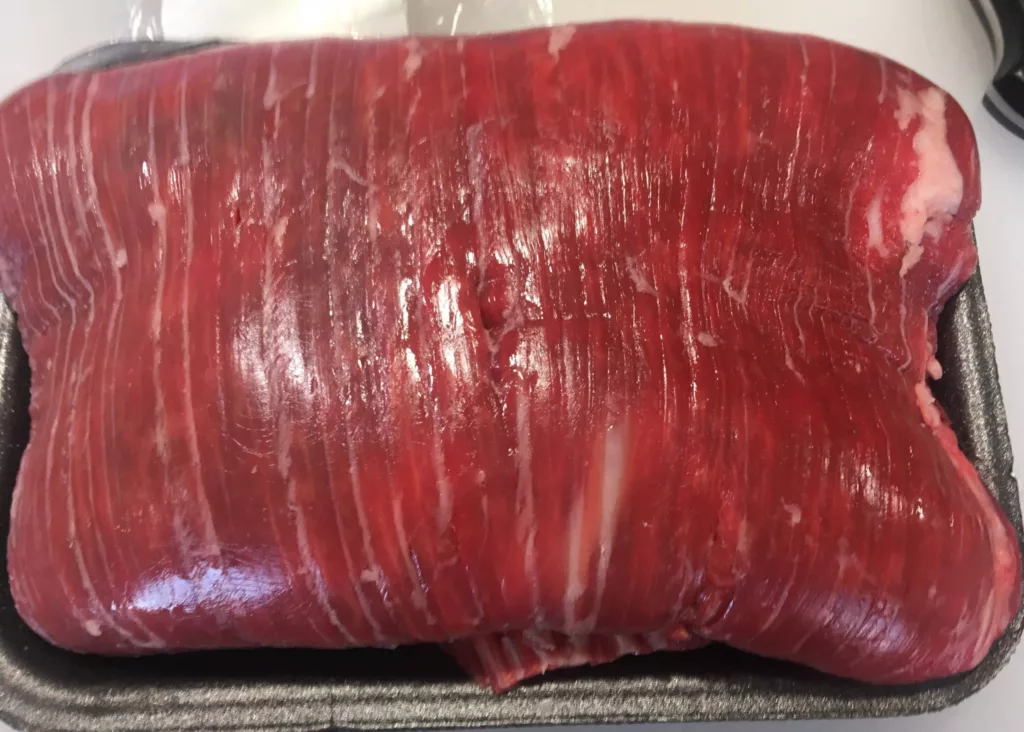
Optimizing Tough Cuts of Beef
Flank steak is a tough cut of meat. By cutting it against the grain, much less force will be required to bite down on the beef strips; this is because flank steak contains wide muscle fibers and lots of connective tissue. By slicing against the grain, you are shortening those muscle fibers and making it much easier to chew.
Three Layers of Ginger
To create a more complex ginger profile, I incorporated three layers of ginger into this ginger beef dish: first, I sweated a generous 1/4 cup of ginger with the chile peppers in order to create a base for the sauce; second, I quickly stir fried some julienned ginger along with some garlic and Szcheuan peppercorn after the main vegetables were done cooking; and third, I mixed in a small amount of powdered ginger into the batter.
Tingly Mouthfeel
Ground Szcheuan peppercorns are used to add a tingly mouthfeel to the dish that makes your taste buds extra senstive. Researchers have discovered that a molecule called hydroxy-alpha-sanshool found in the peppers is responsible for this sensation. The molecule activates your cells’ touch receptors, making them feel as if they are actually being rapidly touched. It’s a very cool sensation and a fun pepercorn to experiment with in the kitchen.
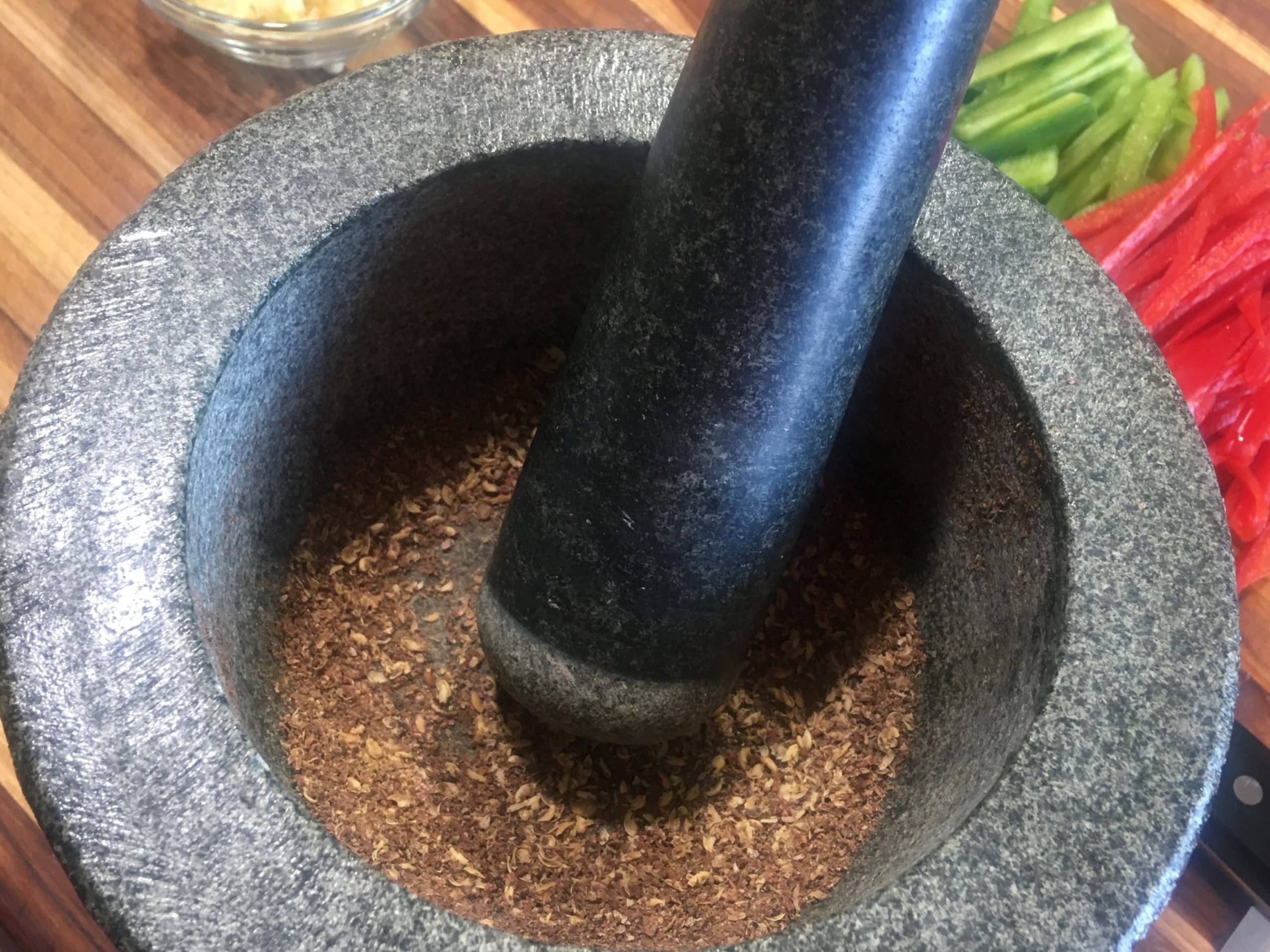
Finely Cut Vegetables and Aromatics for a Quick Stir Fry
Don’t forget to finely julienne your vegetables and finely mince your aromatics. It’s the key to a quick stir fry.
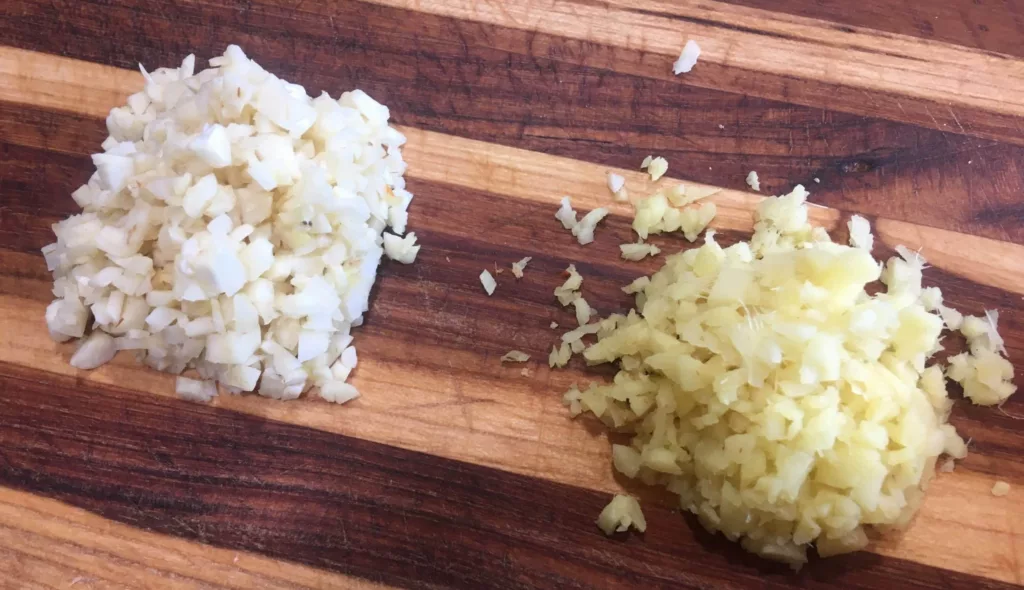
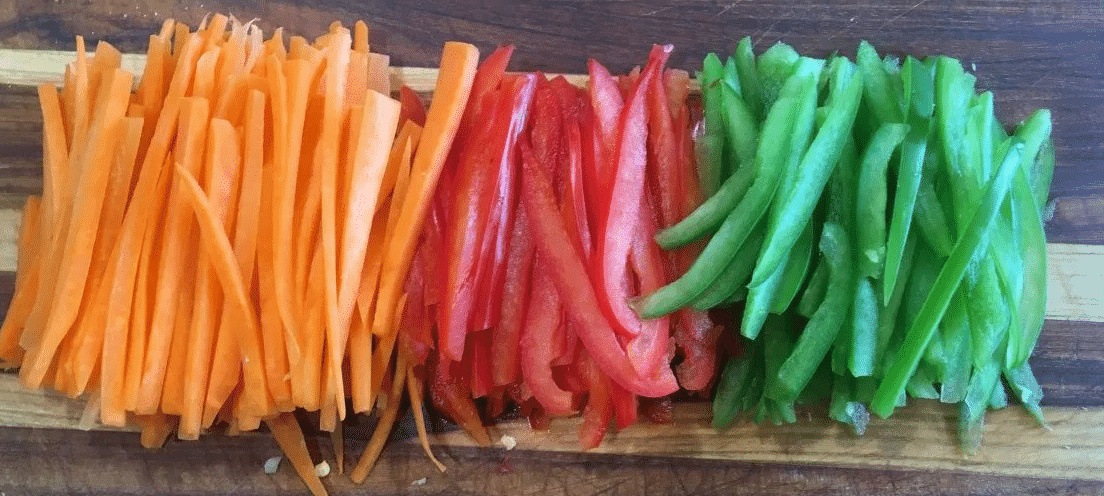



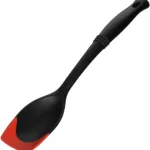

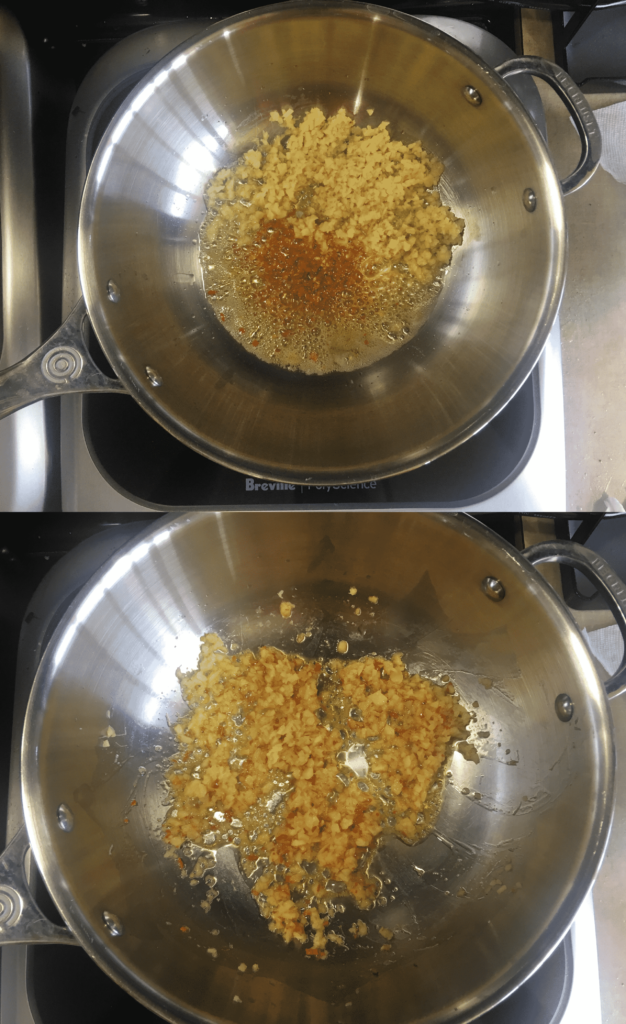
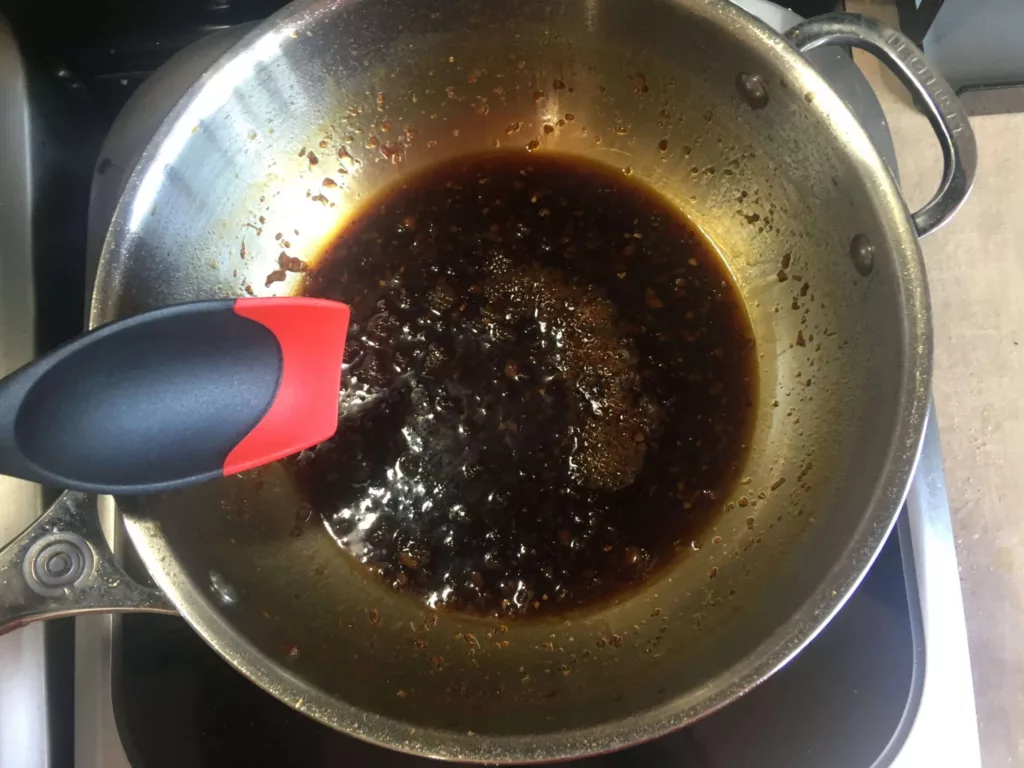
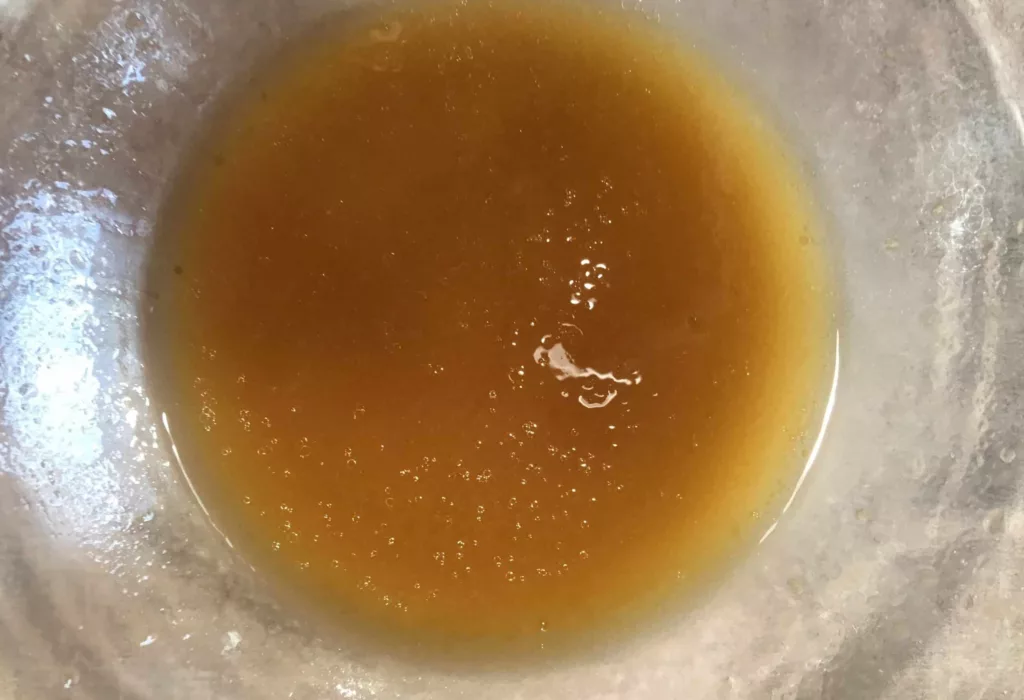
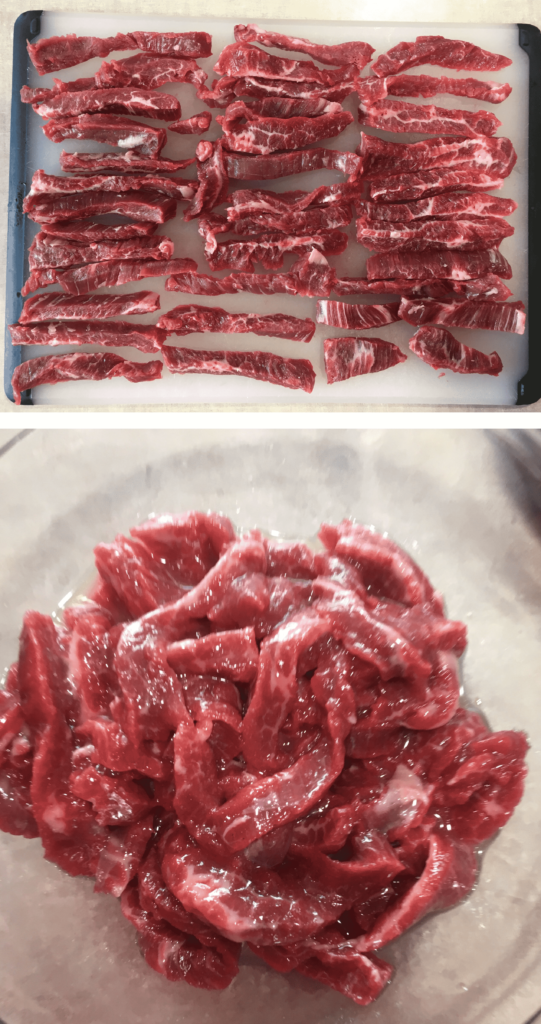
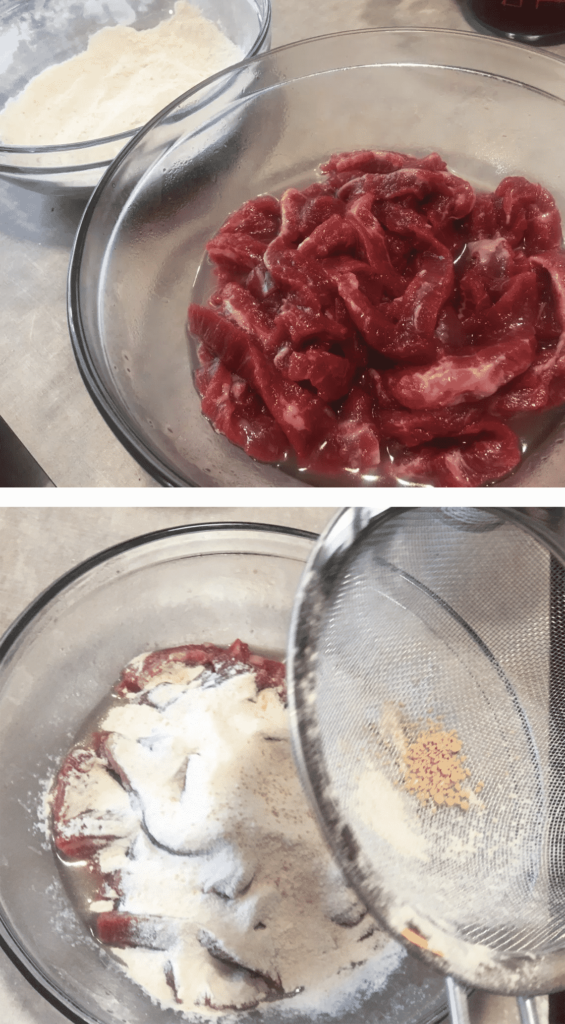
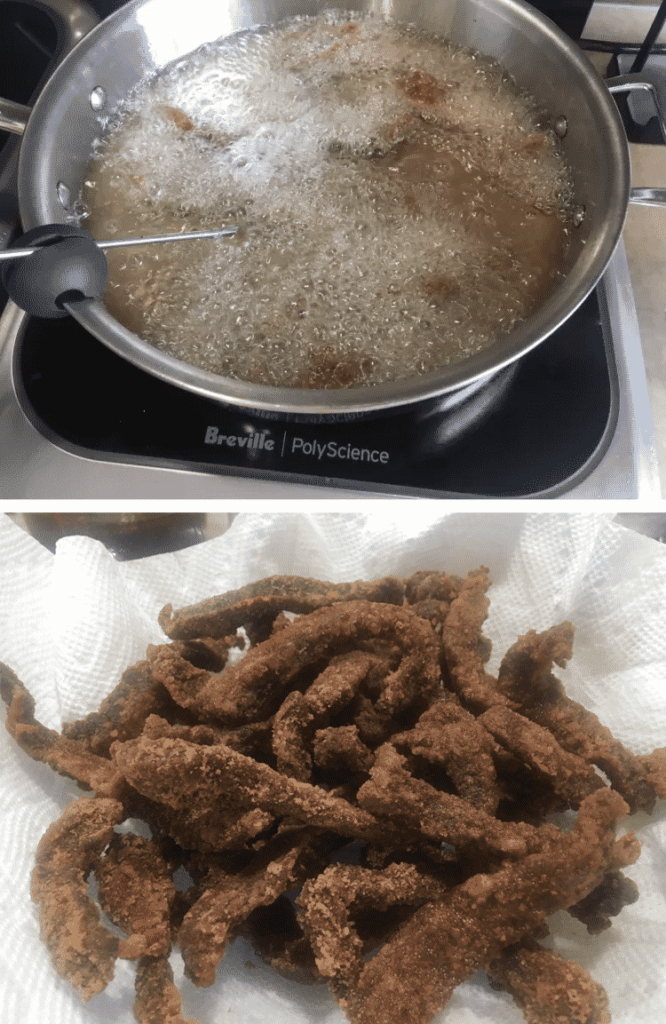
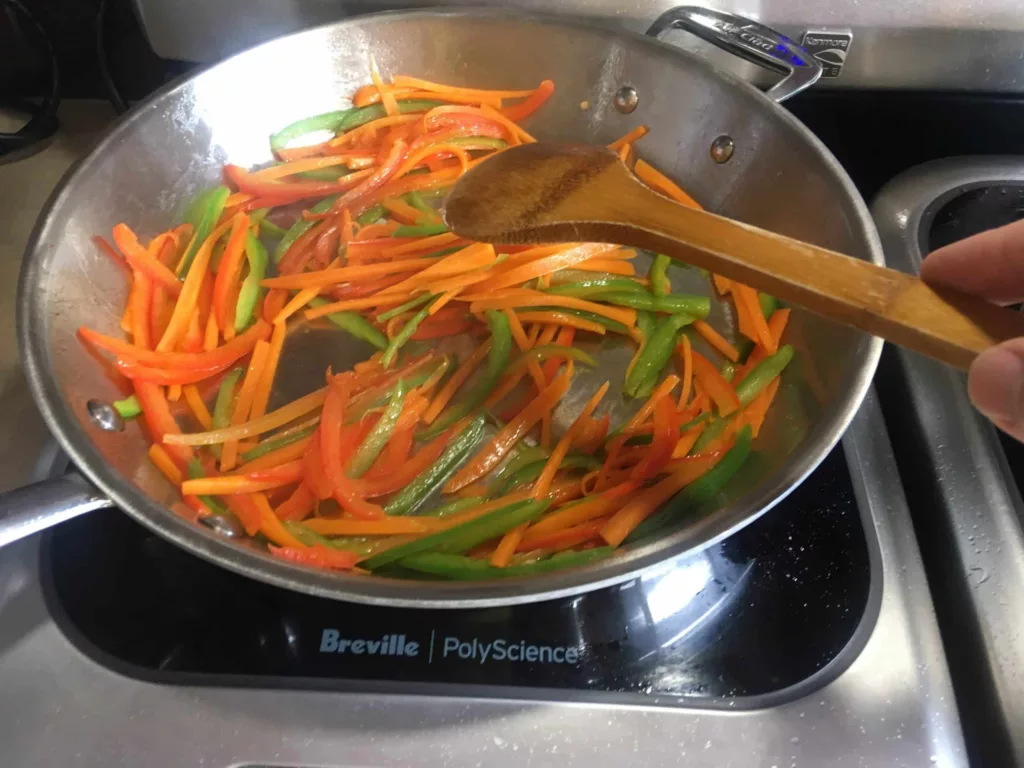
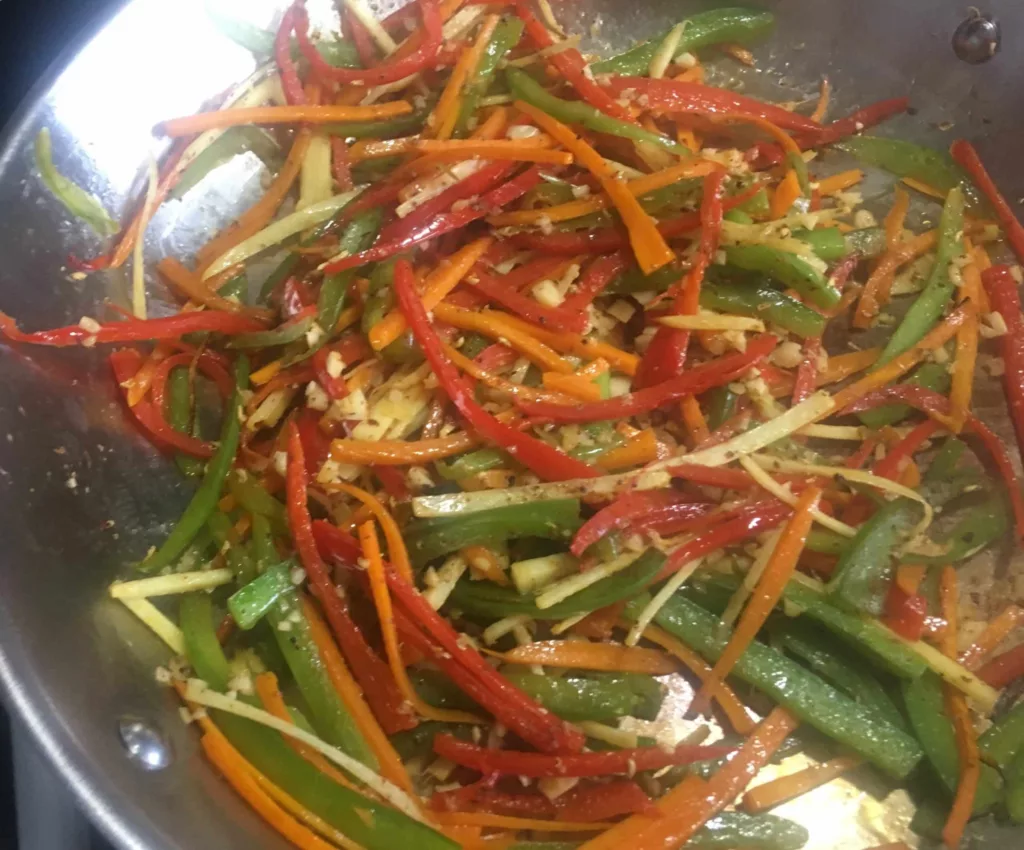

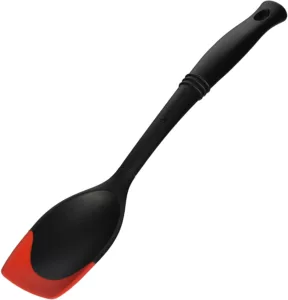
Wow, just ’cause someone can rationalize the process of making MSG – they think the end result is good for them 😛
Good recipe. But what this guy doesn’t know about MSG could fill a warehouse!!
Original DOES NOT use MSG. I’m from Calgary and anyone who thinks MSG is good is VERY Un-educated!
living in Florida now… so hard to get my hands on some good ginger beef. Thanks!
Looks so savoury! I always order this.